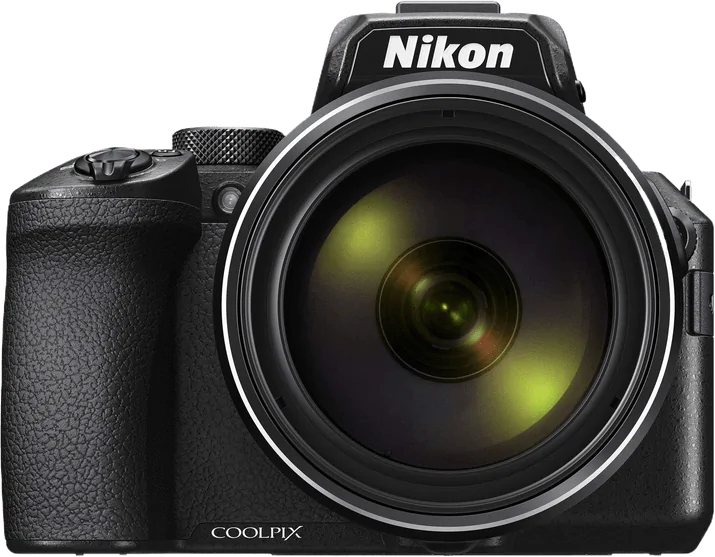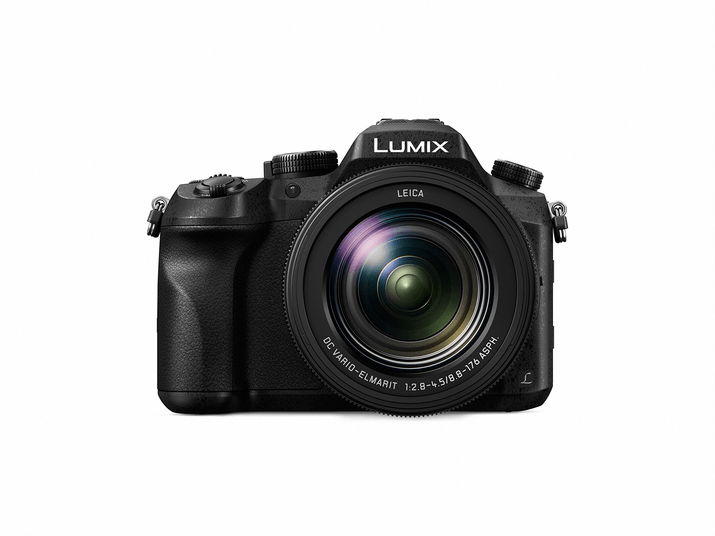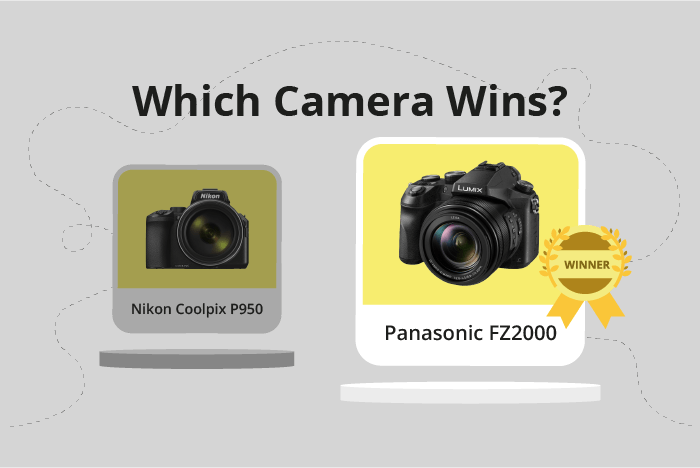Nikon Coolpix P950 vs Panasonic Lumix DMC-FZ2000 / FZ2500 Comparison
Nikon Coolpix P950

Panasonic Lumix DMC-FZ2000 / FZ2500

The Panasonic Lumix DMC-FZ2000 / FZ2500 takes the lead with a score of 63/100, while the Nikon Coolpix P950 trails behind at 52/100. Both cameras are bridge-type and share some common specifications, such as their announcement year and camera size. The Nikon Coolpix P950 was announced in 2020, measures 140 x 110 x 150mm, and weighs 1005g. The Panasonic Lumix DMC-FZ2000 / FZ2500, announced in 2016, has a slightly smaller size of 138 x 102 x 135mm and a lighter weight of 915g.
The winning Panasonic Lumix DMC-FZ2000 / FZ2500 has a higher score due to its better performance and features. However, the Nikon Coolpix P950 has its advantages, such as a more recent release and a lower launch price of $799 compared to the Panasonic’s $1199.
Taking into account the scores and specifications, the Panasonic Lumix DMC-FZ2000 / FZ2500 is the better camera overall, but the Nikon Coolpix P950 may appeal to those looking for a more recent and budget-friendly option.
Nikon Coolpix P950 vs Panasonic Lumix DMC-FZ2000 / FZ2500 Overview and Optics
The Panasonic Lumix DMC-FZ2000 / FZ2500 surpasses the Nikon Coolpix P950 in optics performance with a score of 62/100, compared to the P950’s 53/100. Both cameras share some common specifications, such as a CMOS sensor, fixed lens mount, image stabilization, and the inability to change lenses.
The Lumix FZ2000 / FZ2500 excels with its higher megapixel count (20 MP), faster shooting speed (12 fps), and slightly better DXOMARK sensor score (70). The larger sensor size of 1″ in the FZ2000 / FZ2500 also contributes to its better performance, offering improved image quality and low-light performance. Additionally, the FZ2000 / FZ2500’s 3:2 aspect ratio provides a wider field of view, making it more suitable for landscape and architectural photography.
On the other hand, the Nikon Coolpix P950 has a lower megapixel count (16 MP) and slower shooting speed (7 fps). Its smaller sensor size (1/2.3″) and lower DXOMARK sensor score (69) result in a lower overall optics performance. However, the P950’s 4:3 aspect ratio might be preferable for some photographers who prefer a more square format for their images.
In comparing the optics of these two cameras, the Panasonic Lumix DMC-FZ2000 / FZ2500 stands out as the better choice due to its higher megapixel count, faster shooting speed, larger sensor size, and better DXOMARK sensor score. The Nikon Coolpix P950, while not as strong in these areas, may still appeal to photographers who prefer a 4:3 aspect ratio.
Nikon Coolpix P950 vs Panasonic Lumix DMC-FZ2000 / FZ2500 Video Performance
The Nikon Coolpix P950 outperforms the Panasonic Lumix DMC-FZ2000 / FZ2500 in terms of video capabilities, scoring 83 out of 100 compared to the Panasonic’s 69. Both cameras share several common specifications, including 4K video resolution and a maximum frame rate of 60fps. However, there are notable differences that contribute to the Nikon’s higher score.
One advantage of the Nikon Coolpix P950 is the built-in time-lapse functionality. This feature allows users to create stunning time-lapse videos without additional equipment or software, making it a more versatile option for videographers. The Panasonic Lumix DMC-FZ2000 / FZ2500, on the other hand, lacks this built-in feature, which may limit its appeal to those who frequently use time-lapse in their work.
Despite the lower score, the Panasonic Lumix DMC-FZ2000 / FZ2500 does offer a slightly larger maximum video dimension of 4096 x 2160, compared to the Nikon’s 3840 x 2160. This difference may result in a slightly higher video quality for the Panasonic camera, but it is not significant enough to outweigh the Nikon’s other advantages.
Considering the video capabilities of both cameras, the Nikon Coolpix P950 emerges as the clear winner due to its higher score and built-in time-lapse functionality. While the Panasonic Lumix DMC-FZ2000 / FZ2500 does have a slightly larger maximum video dimension, this advantage is not enough to make up for its lower score and lack of time-lapse feature. Therefore, videographers seeking a camera with superior video capabilities should opt for the Nikon Coolpix P950.
Nikon Coolpix P950 vs Panasonic Lumix DMC-FZ2000 / FZ2500 Features and Benefits
The Panasonic Lumix DMC-FZ2000 / FZ2500 comes out on top with a feature score of 70/100, while the Nikon Coolpix P950 lags behind with a score of 57/100. Both cameras share some common specifications such as a flip screen, WIFI, and Bluetooth connectivity. They both lack GPS functionality.
The Lumix FZ2000 / FZ2500 excels in its screen quality with a resolution of 1,040,000 dots on a 3-inch touchscreen. This superior resolution provides a sharper and clearer image for photographers to work with. The touchscreen functionality also makes it more user-friendly and efficient in selecting and adjusting settings. In contrast, the Coolpix P950 has a slightly larger screen at 3.2 inches but falls short in resolution with only 921,600 dots and no touchscreen capabilities.
The Coolpix P950, however, does have a larger screen size, which could be beneficial for some users. Its 3.2-inch screen may offer a more comfortable viewing experience for those who prefer a bigger display. However, the lack of touchscreen functionality and lower resolution make it less versatile and user-friendly than the Lumix FZ2000 / FZ2500.
To conclude, the Panasonic Lumix DMC-FZ2000 / FZ2500 is the superior camera in terms of features, primarily due to its higher screen resolution and touchscreen capabilities. While the Nikon Coolpix P950 has a slightly larger screen, it falls behind in other aspects, making the Lumix FZ2000 / FZ2500 a better choice for those seeking a more advanced and user-friendly camera.
Nikon Coolpix P950 vs Panasonic Lumix DMC-FZ2000 / FZ2500 Storage and Battery
The Panasonic Lumix DMC-FZ2000 / FZ2500 wins in the storage and battery category, scoring 35/100, while the Nikon Coolpix P950 scores 29/100. Both cameras have one memory card slot and accept SD, SDHC, and SDXC cards. Additionally, both cameras offer USB charging capabilities.
The FZ2000 / FZ2500 has a longer battery life, providing 350 shots per charge, compared to the P950’s 290 shots. This makes the FZ2000 / FZ2500 a better choice for extended photography sessions. The Nikon Coolpix P950 does not have any specific advantages in storage and battery.
In terms of storage and battery, the Panasonic Lumix DMC-FZ2000 / FZ2500 is the better option due to its longer battery life. The Nikon Coolpix P950, on the other hand, falls short in this aspect but still offers decent battery life and storage options for casual photography.
Nikon Coolpix P950 vs Panasonic Lumix DMC-FZ2000 / FZ2500 – Our Verdict
Are you still undecided about which camera is right for you? Have a look at these popular comparisons that feature the Nikon Coolpix P950 or the Panasonic Lumix DMC-FZ2000 / FZ2500:
- Nikon Coolpix P1000 vs Coolpix P950
- Panasonic Lumix DMC-FZ1000 II vs Lumix DMC-FZ2000 / FZ2500
- Nikon Coolpix P900 vs Coolpix P950
- Panasonic Lumix DMC-FZ2000 / FZ2500 vs Lumix FZ80 / FZ82
- Panasonic Lumix DMC-FZ2000 / FZ2500 vs Lumix FZ300 / FZ330
- Canon PowerShot SX70 HS vs Panasonic Lumix DMC-FZ2000 / FZ2500

